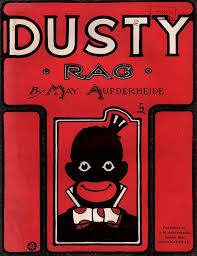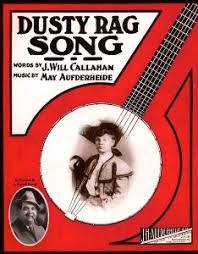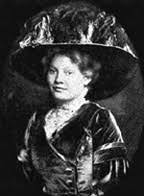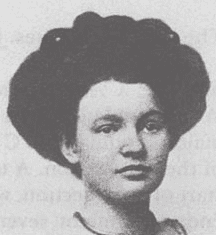In the late 19th century when there was still a lot of racial tension between white people and Black people came the birth of ragtime music. Originating from African Americans, ragtime was developed from jigs and marches composed by other African Americans oftenly called “piano thumping”. It included a style of playing music called syncopation, which is when a a second rhythm is played slightly off the beat of the first rhythm. Although it gained popularity amongst other African Americans due to the nature of the songs and how relatable they were amongst themselves, it also gained popularity between other races and ethnicities which lead to it eventually being discredited and mocked by white people in the infamous minstrel shows. There were few European composers who were influenced by rag music which promoted the spread this music beyond St Louis and the rivers of both Missouri and Mississippi.
Aufderheide was a young musician born in Indiana from a relatively musically oriented family. She began her journey into music after she was introduced to the piano by her sister who played piano for the Indianapolis symphony then again by her aunt who brought May her first piano. Although it was her aunt who taught her how to play classical music, her attention was still on ragtime as she found it more enjoyable to play.
The genre of ragtime was a male dominated genre making her one of the only women playing rag music in this time period. Aufderheide was part of a small yet popular clique of Indianapolis ragtime writers of the early 20th century. She was not the only woman member of this group but was certainly the most financially successful and the best-known woman rag composer of her generation.
The Making of J.H. Aufderheide & Company
In 1908 she married young architect Thomas Millikan Kaufman on March 25, and they settled to the eastern part of the state in Richmond, Indiana. May’s father saw that she was determined to compose, and spurred on in part by her ability to publish a rag on her own and by the slowly growing sales of Dusty Rag, he formed J.H. Aufderheide & Company to publish her works. John bought the Dusty Rag copyright and reissued it under his label along with her Richmond Rag, named for her new locale. She published many ragtime songs and few popular genres under this company such as jazz but was not able to gain any attention for her non-rag music.


In the two images above you see how many of Aufderheide’s original work depicted racist pictures but were later on changed due the boundaries of what was acceptable for white musicians and music lovers to enjoy while still upholding institutional racism.
Overall, although Aufderheide was one of the few female composers and most famous in rag, there is no doubt that her success was due to her being white along with the resources that were made available by her family unlike many of the original ragtime composers who had to fight tooth and nail to be recognized amongst other artists without being mocked and ridiculed by white people and mocked in ministrel shows.



